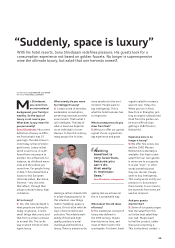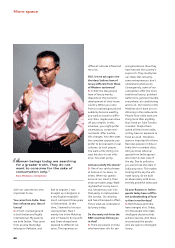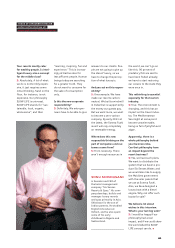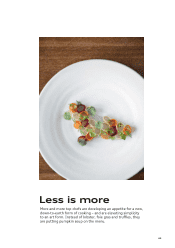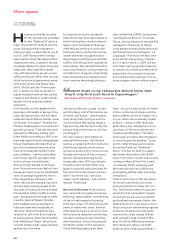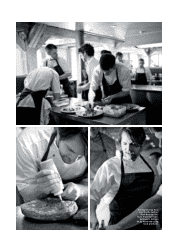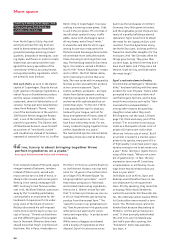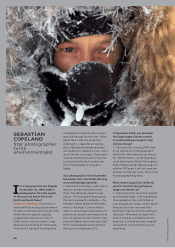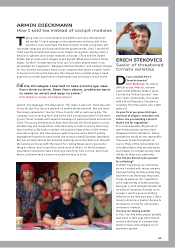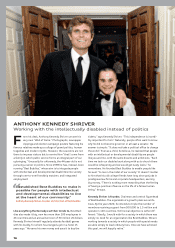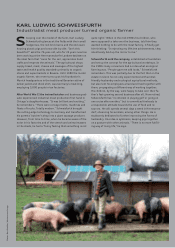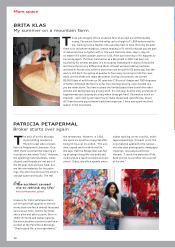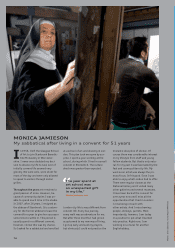Audi 2009 Annual Report Download - page 72
Download and view the complete annual report
Please find page 72 of the 2009 Audi annual report below. You can navigate through the pages in the report by either clicking on the pages listed below, or by using the keyword search tool below to find specific information within the annual report.
69
aking time out in the midst of the 2009 crisis? As a development
aid worker? I am a manager in the automotive industry, and in my
opinion a crisis is perhaps the best moment to take a step back and
reconsider what you are doing and how the system works. Until I turned 40
I had a pretty streamlined career as an industrial engineer, selling interior
electronic systems and cockpit modules in Europe, China and the United
States. But at some point I began to ask myself: What else is there? Faster,
higher, further? Or alternatively: How can I let other people share in my
knowledge? So I applied to “Managers Without Borders” and worked in Nepal
for four months assisting a small social company that exports organic herbs
to Europe to build up the business. The change from a global player’s head-
quarters to a small apartment in Kathmandu was obviously a shock to the
system. The language. The deprivation. The chaos. I was lost. There was elec-
tricity for just four hours a day and no mobile phone network. But you learn
from every experience: You don’t have to write 100 e-mails every day. The
company runs a training farm and works with a small population of extreme-
ly poor forest nomads with superb knowledge of medicinal herbs and ancient
trees. The young entrepreneurs help them harvest the forest plants in a sus-
tainable way and market them internationally in order to secure their long-
term livelihood. My tasks included visiting the village elders in the remote
mountain regions, and developing a sales structure and a kind of quality
management system to ensure that the products meet European standards.
But just as important as the business meetings were the chats over tea with
the natives and local staff. My reason for visiting Nepal was to give some-
thing to others, but I received so much more in return. In the Himalayan
mountains I learned to take a bird’s eye view from time to time. Seen from
above, problems tend to seem so small and easy to solve.
ARMIN DIECKMANN
How I sold tea instead of cockpit modules
T
“
In the Himalayas I learned to take a bird’s eye view
from time to time. Seen from above, problems tend
to seem so small and easy to solve.”
Armin Dieckmann, manager and temporary drop-out
ERICH STEKOVICS
Savior of threatened
tomato varieties
o you actually have a
favorite tomato?
Erich Stekovics: Oh, that is
difficult to say. After all, we have
some 3,200 different seeds in store.
I do like the “Yellow Currants,” how-
ever: small, yellow balls, very sweet,
with a hint of hazelnut. The plant is
originally from Peru and is over 1,400
years old.
On your farm you grow all shapes
and sizes of peppers, tomatoes and
chilies. Are you building a kind of
Noah’s Ark for vegetables?
S: In recent decades, 80 percent of
well-known tomato varieties have
disappeared from cultivation. Future
generations would be very reproachful
if we were to lose this genetic re-
source. Many of the old varieties not
only taste better, they are also easier
and cheaper to cultivate as they need
neither fertilizers nor pesticides.
How did you discover your passion
for collecting?
S: When I was doing my community
service I worked with cancer patients
who kept telling me they wished they
had time to do the things they loved.
It was my wake-up call. I wanted to
see a large variety of plants growing.
Each year I could cultivate the best 50
varieties of tomatoes. But that is not
enough. I want to grow something
different on my land each year. I often
travel to America or Eastern Europe to
do research, to look for old varieties
on farmers’ markets.
You also run tasting events?
S: Yes, I do. And many people actually
have tears in their eyes when they ex-
perience the flavor of a tomato that
seems to have come straight out of
grandma’s garden.
D


